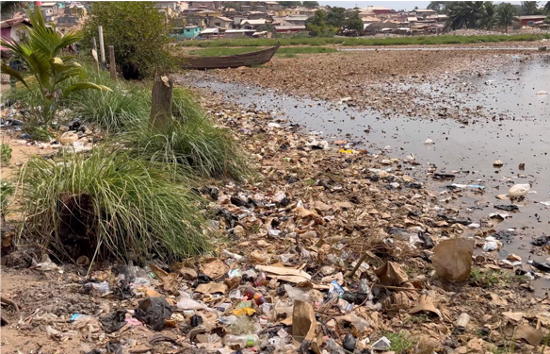By Albert Oppong-Ansah
Accra, Nov. 18. GNA – Plastic waste is projected to rise to 116m tonnes annually by 2060, six times more than the 18m tonnes of waste produced in 2019.
The main driver of rising plastic consumption in sub-Saharan Africa, where 70 per cent of the population is under 30, is rising income and population growth.
Plastic waste is also projected to almost triple by 2060, with half of all plastic waste still being landfilled and less than a fifth recycled, according to a new analysis by the Organisation for Economic Co-operation and Development’s (OECD) Global Plastics Outlook: Policy Scenarios to 2060.

The soaring demand for plastic predicted across sub-Saharan Africa, where many countries do not have the capacity to manage it, was revealed before a meeting of governments in Nairobi, Kenya, this week to ‘hammer’ a UN treaty to fight plastic pollution.
The burning of plastic waste, a common practice in some regions of Africa, releases harmful pollutants into the air, including toxic gases and particulate matter, according to the World Health Organisation (WHO).
Mr Solomon Noi, Director of the Waste Management Department at the Accra Metropolitan Assembly, said Ghana and the sub-regional countries were still grappling with the plastic pollution with much of it going into the marine bodies stockpiling while others were burnt.
“There is no reliable data on the quantum of different categories of plastics coming into the countries to be able to account for it after use. There are no concrete regulations and structures to limit plastic based on the country’s capacity to deal with plastic waste,” he said.
Ghana, just like many African countries, he stated, did not have the adequate infrastructure, including a standard land field and a state-of-the-art incinerator to address the pollution associated with plastic.
Mr Noi accused foreign firms of establishing businesses that would otherwise not survive in the global north due to their plastic footprint.
The Director, who is a Sanitary Engineer, acknowledged the efforts of plastic waste collection initiatives by some private sector actors, noting that that formed a very small part of the problem.
“For example, the sachet water category of plastic is collected but the carrier bags are left. They either land in the drainage or on the land field site. Here, they are burnt with other materials and emit chemicals into the atmosphere,” he said.
Plastic leakage to the environment is projected to double to 44 million tonnes a year, while the build-up of plastics in aquatic environments will more than triple, exacerbating environmental and health impacts.
Other environmental impacts through the plastics lifecycle are also projected to increase, mostly due to the plastics production phase.
Green House Gas (GHG) emissions from the plastics lifecycle will more than double from 1.8 gigatonnes of carbon dioxide equivalent (Gt CO2e) to 4.3 Gt CO2e.
Ozone formation, acidification, and human toxicity are also projected to more than double.
According to the World Health Organisation’s study, pollutants have been proven to cause respiratory problems, exacerbating existing respiratory conditions, and contributing to air pollution-related diseases.
Accra generates nearly 900,000 metric tons of solid waste annually which includes waste plastics, studies by Clean Air Fund said.

The figure for solid waste is expected to double by 2030 as 14.6 per cent of households burn their daily solid waste, and 17.4 per cent of waste is disposed of in public spaces.
The country’s ability to implement identified indicative clean air policies to reduce air pollution can unlock more than $ 28 million for Accra – around 16 per cent of its financial costs under the business-as-usual scenario in 2040 alone.
GNA